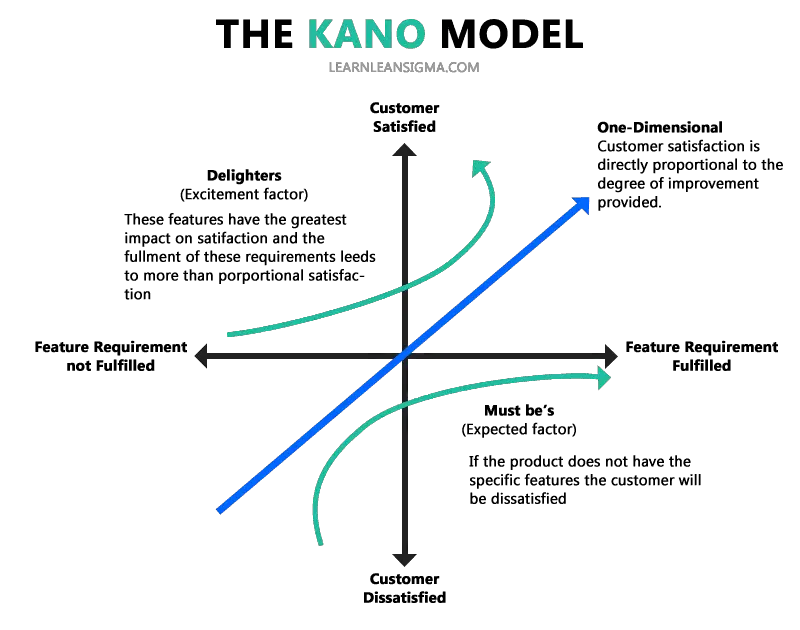The Three Categories of Customer Preferences
Basic Needs (Must-Be)
Basic needs, also known as must-be needs, are essential basic needs that a customer expects from a product or service. They are considered prerequisites for market entry. These needs are often unspoken because customers assume that they will exist. They will only notice them if they are missing, at which point they are dissatisfied.
Characteristics of these needs are:
Implicit: Customers rarely mention that they need them but will be dissatisfied if they are not met.
Fundamental: They form the foundation on which additional features are built.
Non-Negotiable: Their absence would be a deal-breaker.
Example
For a hotel room, basic needs are the essentials that every guest expects to be met. These would include:
Cleanliness: Guests expect the room to be spotless upon arrival, with fresh bedding and no trash or debris.
Security: Functional locks on doors and windows, a safe for valuables, and a sense of personal safety.
Privacy: Adequate measures to ensure that guests can enjoy their stay without unwarranted disturbances.
Basic amenities: This includes hot water, electricity, heating/air conditioning, and toiletries.
Performance Needs (One-Dimensional)
Performance needs are directly related to the performance of the product or service. The level of customer satisfaction is proportional to the level of fulfillment of these needs. Customers will be able to clearly articulate these needs and compare them across different products.
Characteristics of these needs are:
Specified: These needs are often specified by customers when asked about their preferences.
Measurable: Their fulfilment can usually be measured on a scale.
Competitive: These are the areas in which a product or service can differentiate itself from competitors.
Example
Continuing with the hotel room example, Performance needs relate to aspects that can increase satisfaction if performed well and lead to dissatisfaction if performed poorly. They are typically compared across different hotels and include:
Comfort of the bed: The quality of the mattress, pillows, and linens can greatly affect a guest’s satisfaction.
Room size: Spaciousness can enhance the comfort level of a guest’s stay.
In-room technology: The availability and quality of Wi-Fi, the television, and the range of channels or streaming services.
Quality of service: The responsiveness and friendliness of the hotel staff, room service efficiency, and overall customer service.
Improvements in these areas can increase a guest’s satisfaction linearly – the better the performance, the higher the satisfaction.
Excitement Needs (Attractive)
Then we have excitement needs, which are delightful features that customers do not expect. They can significantly boost customer satisfaction and be a source of genuine competitive differentiation. As customers do not expect these features, if they were absent, this would not cause dissatisfaction.
Characteristics of these needs are:
- Unanticipated: Customers are often unaware of these needs until they see them.
- Delightful: When these features are present, they can turn customers into enthusiastic promoters.
- Differentiators: They can set a product apart from the competition in a unique way.
Example
Excitement needs are those delightful surprises that guests do not expect but that can significantly enhance their satisfaction with the hotel room. These could include:
- Complimentary upgrades: Being upgraded to a suite or a room with a better view can be a delightful surprise.
- Personalized services: customized greetings, such as a welcome note or a complimentary bottle of wine for a special occasion.
- Smart room features: include advanced technologies like voice-controlled lights and curtains, or a smart TV that greets you by name.
- Unique amenities: an in-room espresso machine, a high-end sound system, or a selection of luxury bath products.
These features can create memorable experiences for guests, potentially turning them into loyal customers and advocates for the brand.








